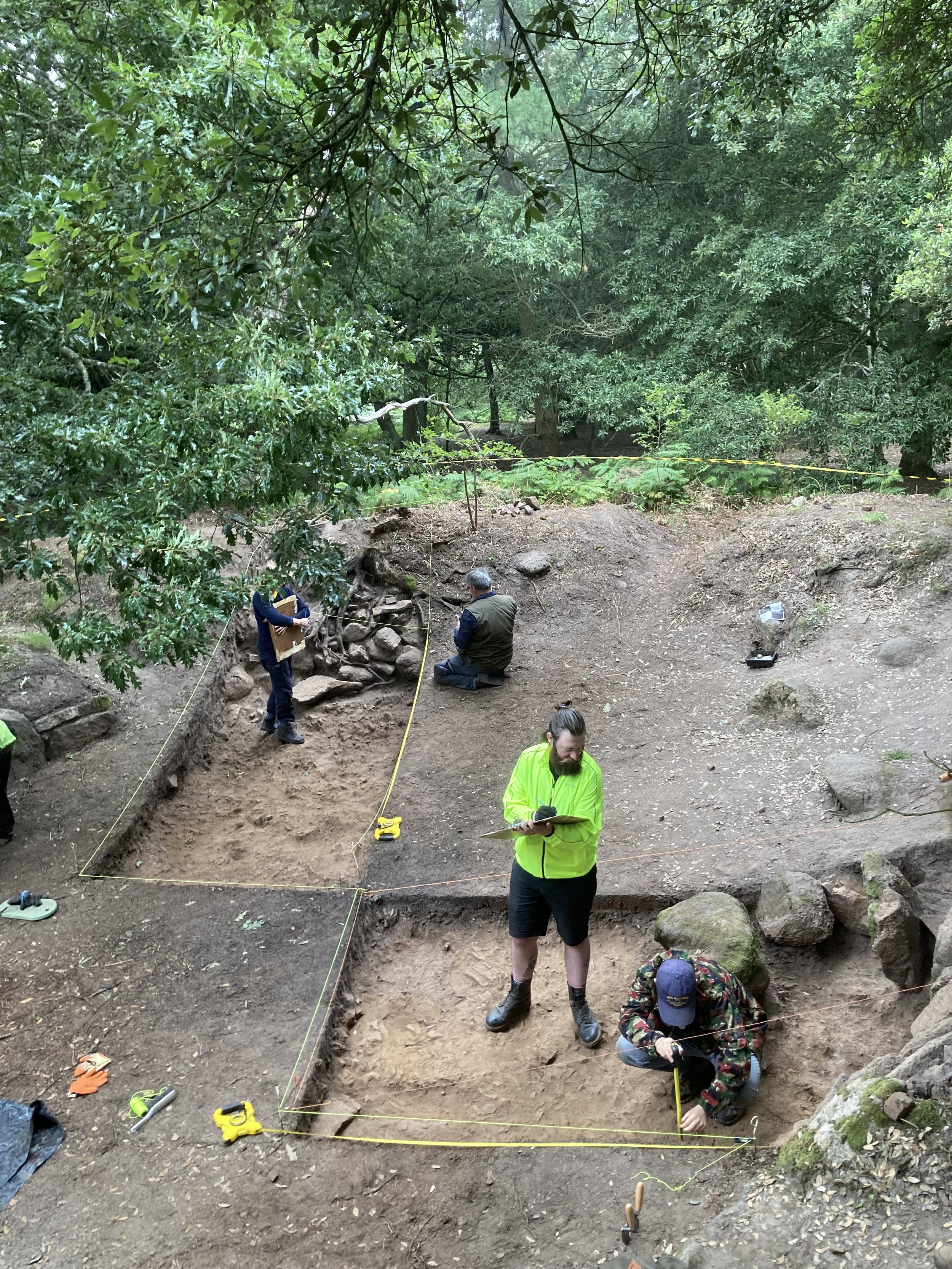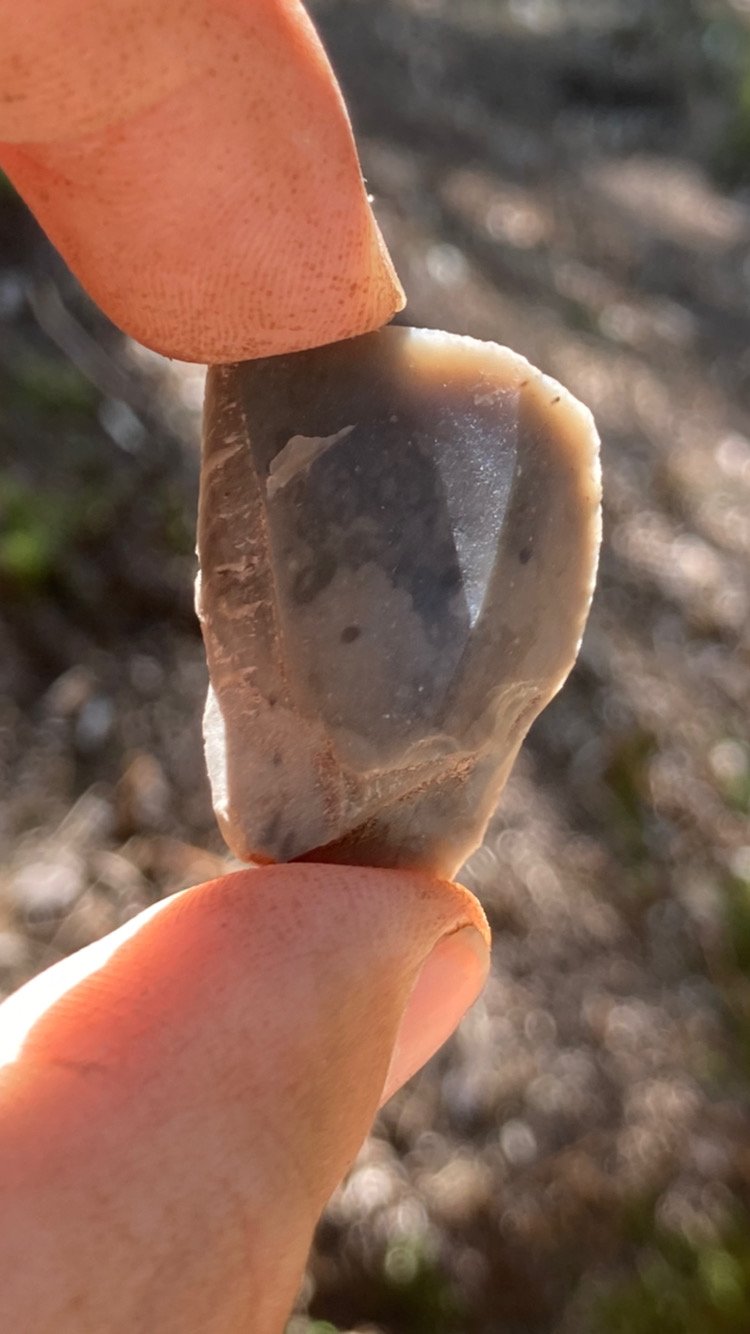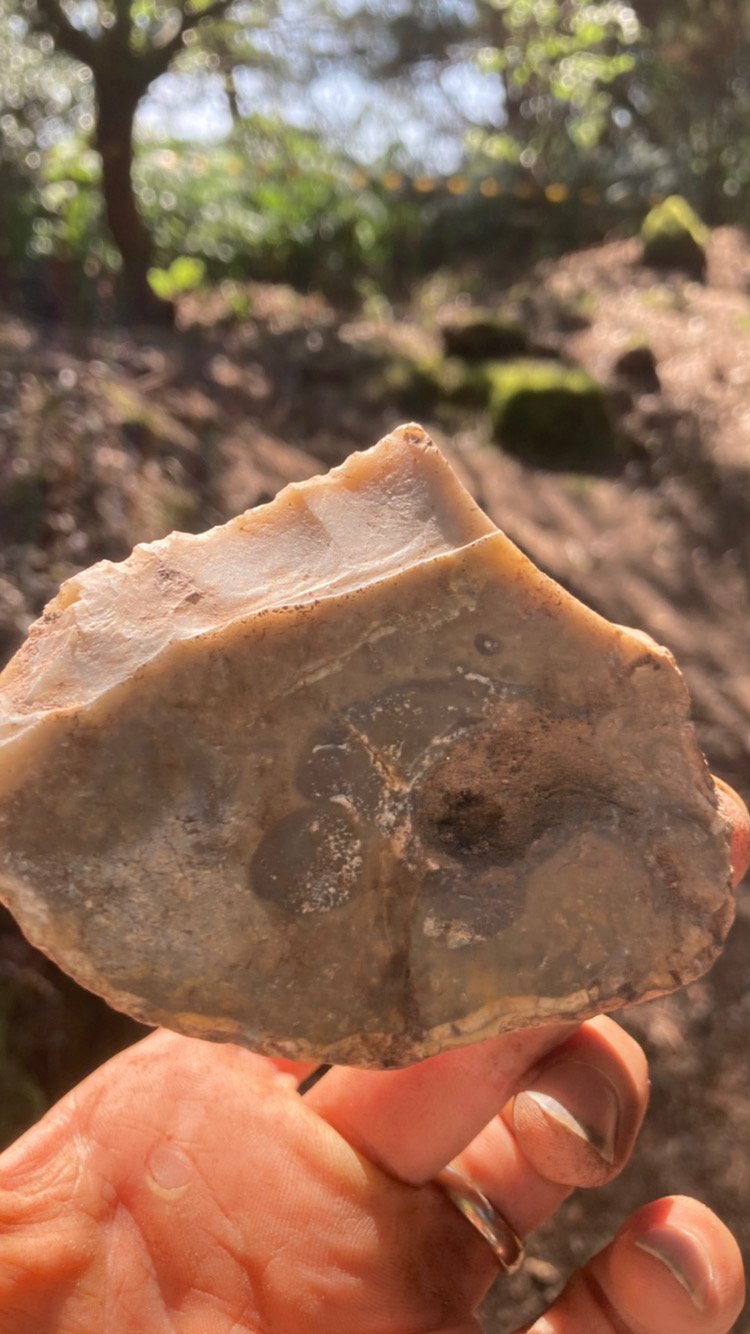The Archaeological Map of Jersey project
JICAS 2023 Island Archaeology Field School, La Hougue de Vinde, Noirmont
The Jersey International Centre of Advanced Studies returned to La Hougue de Vinde, Noirmont, this summer as part of its 2023 Island Archaeology Field School. Led by Dr Helen Dawson (Freie Universität Berlin, Università di Bologna), Dr Hervé Duval-Gatignol (Société Jersiaise), and with Dr Matt Pope (University College London) acting as scientific advisor, this year’s excavation was undertaken to better understand the site and how it relates to other megalithic monuments on the island, but also to bring awareness of this little-known site to islanders who often visit the area. The site had fallen into a state of neglect, perhaps due to its location, nestled back into the SSI and out of immediate eyesight, and damaged considerably by mountain bikers who have used it as a ramp and metal detectorists illegally looking for finds, despite the site having the highest degree of protection, being a Grade 1 Listed Place.
La Hougue de Vinde is a circular tumulus bearing similarities to the cist-in-circle series which is dated approximately to the Late Neolithic to the Early Bronze Age (circa 2850-2250 BC). The cist-in-circle tumulus series represents a burial tradition that is thought to have developed in Jersey with similar examples also found in Guernsey, Alderney, and Herm. La Hougue de Vinde is atypical in that it features not only one but two circular walls and lacks any trace of a central burial cist (a small stone chamber). Similar sites in Jersey can be found at Les Platons and at Ville-ès-Nouaux.
Although excavated in the late 19th Century and then again in 1914 and the 1970s, information about the site from these earlier excavations is limited but clearly pointed to the site’s considerable potential to produce new information. Moreover, many of the stones from the inner circle marked on the 1914 excavation plan are still visible and in place and the potential for finding significant archaeological remains at the site was further bolstered by the retrieval in recent years of flint artefacts in the vicinity, thus making the site an ideal location for re-investigation.
This year’s field school aimed to provide a modern assessment of the monument’s condition and potential to yield archaeological remains, and devise ways to present the monument more effectively to the public. Within the first week of our archaeological evaluation, we opened two 2x4m trenches targeting the inner and outer walls. In both trenches, we were lucky to successfully reach intact archaeological layers, providing key information on the construction, use, and abandonment of the monument, and which produced a range of interesting finds, comprising flint cores, flakes, and tools, all of which will undergo specialist study to help refine our understanding of the site’s function and dating. At the end of the excavation, before completely backfilling the trenches to preserve the archaeological deposits, we carried out a detailed photogrammetric survey of the structural remains, which will produce a three-dimensional model of the monument, currently being developed by Dr Hervé Duval-Gatignol and Agatha Medina Ruiz at the Société Jersiaise. Importantly, our archaeological evaluation was the first systematic excavation of a megalithic structure in Jersey since the ground-breaking work of La Hougue Bie in the 1990s, bringing together postgraduate students, local lifelong learners, international academics, and professionals from both Jersey Heritage and the Société Jersiaise - a fantastic result for our island community.
2023 excavation team





